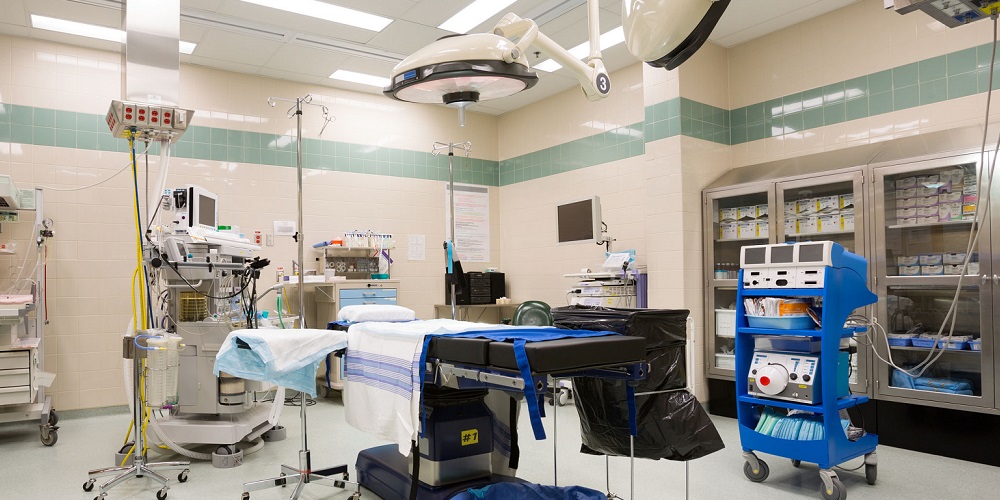Tag: DMAIC project

Using Six Sigma to Reduce Pressure Ulcers at a Hospital
Published:Since 2001, Thibodaux Regional Medical Center (TRMC) in Louisiana has applied Six Sigma and change management methods to a range of clinical and operational issues. One project that clearly aligned with the hospital’s strategic plan was an initiative to reduce nosocomial or hospital-acquired pressure ulcers, because this is one of the key performance metrics indicating […]
Read more »
DMAIC Project Selection Using a Systematic Approach
Published:The growth of the Six Sigma DMAIC continuous improvement process in the United States’ more service-oriented economy is not proceeding as fast as it did earlier in the country’s manufacturing industries. DMAIC is a well-proven process, but requires a systematic approach to project selection in transactional environments. When companies are squeezed on cost and drive […]
Read more »
Improving Staff Scheduling at Providence Health System
Published:As with most hospitals, labor is the largest budget expense at the Providence Alaska Medical Center (PAMC) in Anchorage. But benchmarking indicated that staff utilization at PAMC, a part of the Providence Health System, was above the 75th percentile of the national average. To remedy this, in October 2003, a multidisciplinary team (nursing, leadership, finance […]
Read more »
Rush to Enact Solutions Sabotages a DMAIC Project
Published:In 2004, a small and relatively young technology company (7,500 employees and an annual revenue of $2 billion) implemented the Public Company Accounting Reform and Investor Protection Act of 2002, or what is usually referred to as the Sarbanes-Oxley Act (SOX). In an effort to be fully compliant the company identified and initiated more than […]
Read more »
Six Sigma Trims Turnover Time for Orthopedic Surgeries
Published:Orthopedic and neurological spine surgery represents a competitive and profitable business for many healthcare organizations. Expanding this particular service line and ensuring efficiency in the operating room (OR) are among the strategic initiatives at Memorial Hermann Southwest Hospital in Houston, Texas, U.S.A., one of 16 hospitals in the Memorial Hermann system. Surgeons at the hospital […]
Read more »
Improving a Health System’s Cash Flow Management
Published:The healthcare industry is going through mergers and acquisitions and facing new economic struggles. As hospitals realize the need to consolidate resources regionally, a big challenge takes shape: handling the information necessary to manage cash flow efficiently. Cash flow management is vital for hospital systems to sustain their daily operations. Our team used DMAIC to […]
Read more »
Aligning Call Center Agent Goals with Customer Desires
Published:In the 1990s, the teller counter was the primary customer-facing area in the financial service industry, and so improvement efforts were leveraged in this arena. With increased improvements in technology and online banking utilization, however, process improvement efforts have shifted to internal areas. Yet companies must realize that even though customers are becoming more self-reliant […]
Read more »
DMAIC Helps Agency Craft Green Electronics Plan
Published:The increased demand and limited supply of fossil fuels has signified the importance of energy efficiency and conservation across the world. Energy resourcefulness has come to the forefront in both federal and private organizations policies and practices. Many organizational standards and procedures aim to minimize the use of energy, thereby protecting the environment. Various federal […]
Read more »
Reducing Costs by Controlling Raw Material Consumption
Published:All product manufacturers are being pushed to produce the best quality products without exceeding budget. Effective resource management can be instrumental in achieving this goal. A particular textile processing mill, which dyes and prints handloom fabric predominantly used in school uniforms, decided to follow the DMAIC (Define, Measure, Analyze, Improve, Control) approach to reduce its […]
Read more »
Outpatient Imaging Reports TAT Cut from 64 to 9 Hours
Published:Competition in the outpatient imaging center market is intense. New imaging centers are springing up everywhere. Faced with decreasing reimbursements, ever-changing technology and the expectation of spa-like atmospheres, how can an outpatient imaging center remain profitable? The answer lies with the customer. Having a pulse on the customer experience and continually eliciting and acting on […]
Read more »
Reducing Avoidable Cancellations on the Day of Surgery
Published:To accommodate growth in surgical service without adding resources, a Six Sigma team at Deaconess Hospital takes aim at reducing the number of same day surgical cancellations.
Read more »
Reducing Delayed Starts in Specials Lab with Six Sigma
Published:Special radiology procedures can be some of the most difficult to manage in healthcare. Their production relies on the chorus of a multidisciplinary team working within a limited time frame. Ancillary department performance can directly affect outcome performance for the unit. Defects such as missing orders, missing history and physicals or problems with patient flow […]
Read more »
Helping the Help Desk Satisfy Customers More Quickly: An iSixSigma Case Study
Published:A young, rapidly expanding financial services company located in India runs an in-house help desk for responding to customer queries via email or telephone. Help desk response time is tracked using software that calculates the time between registering and closing calls. A project was instituted to train employees in the relevant tools and techniques of […]
Read more »
Common Success Factors, Uncommon Success in Europe
Published:Whether implementing Six Sigma in Munich or Manhattan, Paris or Prague, certain common factors are critical for success. Nonetheless, how one successfully applies these factors is culturally dependent. Universal Critical Success Factors Accepting the General Electric definition of Six Sigma as “completely satisfying customers’ needs profitably” means that Six Sigma requires a company-wide initiative to […]
Read more »
Six Sigma Improves Workflow in N-Medicine Department
Published:The nuclear medicine department located in the Ospedale Santa Croce e Carle in Cuneo, Italy, has always been recognized as a national and international reference site for its clinical compentencies and innovative facility design. When originally opened, the nuclear medicine department was structured to provide the best possible service to patients. This included a focus […]
Read more »
Achieving and Sustaining Improvement in Cardiac Medication
Published:More than 70 million Americans have some form of cardiovascular disease, including stroke, high blood pressure, congestive heart failure (CHF) and acute myocardial infarction (AMI). The numbers continue to rise as the population ages, and improving the timeliness and quality of cardiovascular care continues to be a critical area of focus for healthcare providers. Some […]
Read more »
Measure the Immeasurable: The World of Smell and Taste
Published:In many industries, improvement projects quickly face an obstacle: The lack of easy to get and reliable data. This is especially true when the critical-to-quality elements (CTQs) of the project are “soft attributes” such as taste, smell or texture. Facing such a problem in the food and drink industries is obvious. While in a Kano […]
Read more »
Reducing Door-to-inflation Time for the AMI Patient
Published:Cardiovascular disease is the leading cause of death in the United States, and more than 900,000 people annually are diagnosed with acute myocardial infarction (AMI). The Joint Commission on Accreditation of Healthcare Organizations (JCAHO) and the Centers for Medicare and Medicaid (CMS) have identified AMI as one of the early priority focus areas for hospital […]
Read more »
Reducing Admitting Delays by Improving Bed Management
Published:When confronted by concerns of some physicians about frequent lengthy delays that they experienced admitting patients, Memorial Hermann Southwest Hospital in Houston, Texas, assembled a cross-functional Six Sigma team to identify and address any underlying issues that might be causing the delays. The business case for pursuing the project was clear. Improving bed management and […]
Read more »
Attention Six Sigma, You’re Wanted in Surgery
Published:With the demand for surgical services growing, especially with ambulatory and cosmetic procedures, hospitals continue learning that Six Sigma is a useful tool.
Read more »
Applying Six Sigma to Improve Diagnostic Imaging
Published:Since the discovery of X-rays in 1895, the field of diagnostic imaging has undergone dramatic changes. Within a year after its introduction, the application of X-rays to diagnosis and therapy had already become an established part of medicine. The decades to follow produced a steadily increasing stream of innovation – including the advent of nuclear […]
Read more »
A Six Sigma Case Study – Tutorial for IT Call Center – Part 1 of 6
Published:Part 1 of this combination “case study and tutorial” tracks the inception of a Six Sigma DMAIC project by an IT support business. The project is aimed at helping the company become more competitive and profitable. Each part follows the project team as it works through another stage of the DMAIC methodology. Click to read […]
Read more »
A Six Sigma Case Study- Tutorial for IT Call Center – Part 2 of 6
Published:This combination “case study and tutorial” tracks the inception of a Six Sigma DMAIC project by an IT support business. The project is aimed at helping the company become more competitive and profitable. Each part follows the project team as it works through another stage of the DMAIC methodology. Click to read the rest of […]
Read more »
Case Study: Salvaging a Call Center’s Big Software Investment
Published:Software can be a helpful tool but it is not a magic wand. After investing half a million dollars in tracking software for its call center and still seeing a high volume of complaints, one company used DMAIC to turn a disaster into a success.
Read more »